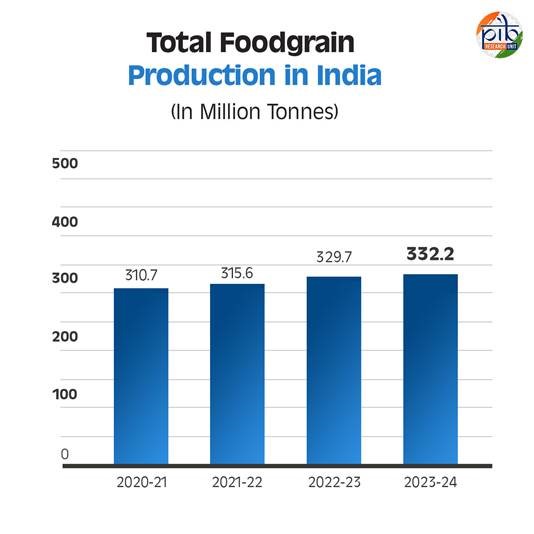7667766266
enquiry@shankarias.in
National Farmers’ Day is observed on 23rd December.
According to the Periodic Labour Force Survey (PLFS) 2022-23 , about 45.76% of the total workforce is engaged in agriculture and allied sector during 2022-23.








